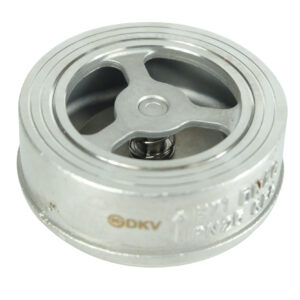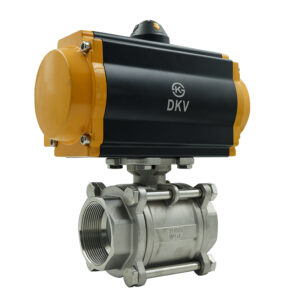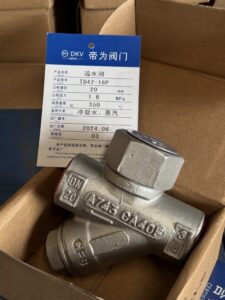
What Is a Check Valve and How Does It Work?
What Is a Check Valve and How Does It Work? Introduction — Why Check Valves Matter in Industrial Systems In every pipeline system, fluid needs
In modern industries, the performance of a valve often determines the efficiency, reliability, and safety of a process system.
Pneumatic valves—also known as air-actuated valves—are widely used for their fast response, high automation compatibility, and strong durability.
This article explains in simple but professional terms how pneumatic valves work, their main types, advantages, applications, selection tips, and maintenance advice.
A pneumatic valve is a valve operated by compressed air. It consists of two main parts: the valve body (such as a ball, butterfly, globe, or gate valve) and a pneumatic actuator.
The actuator converts the air pressure into mechanical motion (linear or rotary), which opens or closes the valve.
Tip: A pneumatic valve system usually includes air treatment units (filters, regulators, lubricators) and control components such as solenoid valves and limit switches.




The working principle is simple:
There are two common actuation modes: single-acting (spring return) and double-acting.
Single-acting actuators have a spring that automatically returns the valve to a “safe” position (normally open or normally closed) in case of air or power loss.

Note: The actuator size should be selected according to the valve’s operating torque, with a safety factor of 1.5–2 times.

Example: In a beverage factory, pneumatic three-way ball valves reduced changeover time from 8 seconds to 2 seconds, improving efficiency by 25%.
Tip: Always include an air preparation unit (FRL) to ensure clean, stable air supply.
Maintenance Frequency: Once every 6–12 months for general conditions; every 3–6 months for harsh environments.
Pneumatic valves combine speed, reliability, and automation flexibility, making them ideal for a wide range of industrial applications.
To ensure performance and longevity, proper sizing, correct installation, and regular maintenance are essential.
If you are planning an industrial automation project, investing in a reliable pneumatic valve system will greatly improve efficiency and safety.
Need technical support? DKV Valve provides complete pneumatic valve solutions, including actuator sizing, torque calculation, sample testing, and project quotations.

What Is a Check Valve and How Does It Work? Introduction — Why Check Valves Matter in Industrial Systems In every pipeline system, fluid needs

What Is a Pneumatic Valve ? In modern industries, the performance of a valve often determines the efficiency, reliability, and safety of a process system.Pneumatic

What Is a Steam Trap & How Does It Work? Introduction — The Hidden Hero in Steam Systems In every industrial steam system — whether

Why Use a Globe Valve Instead of a Gate Valve? A Practical Guide for Engineers & Procurement Managers Introduction — Making the Right Valve Choice

What Is the Main Advantage of a Butterfly Valve? Introduction — why this question matters When you plan an industrial piping system, valve selection affects

Electric Valves: Comprehensive Guide for Industrial Applications In modern industrial automation, electric valves play a critical role in regulating fluid flow with precision and reliability.
Poly Center T41601, Le Cong Town, Shunde District, Foshan City, Guangdong Province, China
We will contact you within 1 working day, please pay attention to the email with the suffix “@dkvchina.com”.
We will contact you within 1 working day, please pay attention to the email with the suffix “dkvchina.com”.